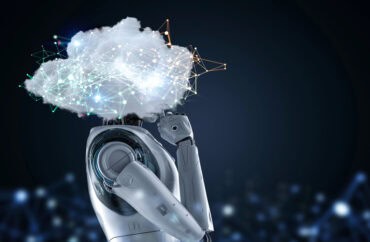
Predictions from Andi Mann, Chief Technology Advocate at Splunk, on how 2019 may see more emphasis on the “New IT” ecosystem’s interaction.
In 2019, IT operations teams will be asked to deliver deep insights to better understand their customers and make data-driven decisions that lead to their organization’s success with greater speed and agility than ever before. These teams will be required to drive real business results – not just “IT outcomes” – including faster delivery of new products and services, higher quality digital customer interactions, faster incident detection, troubleshooting, resolution and more.
At the end of the day, we know that IT teams will need to adapt to new ways of working in order to help their organizations be successful.
Here are three ways IT teams will need to evolve in 2019:
#1: IT teams must be flexible in order to adapt quickly
In 2019, IT departments will continue evolving from building and managing infrastructure and applications to acquiring and managing external applications and services. Organizations must be more flexible to take advantage of the changes — both in roles and technology adoption.
This year will see an increased need for solutions that help promote collaboration and communication, while also providing a shared understanding of current systems and processes. This dialogue between developers and ITOps (and others e.g. security, QA) is key – evidenced in continued interest in DevOps and DevSecOps. This transparency must also span across third-party vendor’s environments, considering the growing use of outside services and public clouds.
Additionally, there will be an increased focus on specialized skills in new areas like Cloud Operations, Containerization, Serverless, and Site Reliability Engineering (SRE) as these “NewOps” professionals adopt new approaches to modern IT operations including advanced application of monitoring, metrics, observability, analytics, charting, engineering, and reliability to these complex, multi-channel, highly distributed “New IT” architectures. This will enable IT leaders to direct higher-value skills and resources more appropriately to deliver on real business goals, whether delivering more features, improving service quality, ensuring system reliability, or improving customer engagement.
On the technology end, the most successful vendors will provide AI- and ML-backed solutions that enable more people to leverage their data and devices without being a data scientist. Given the increasing need for observability coupled with both speed and flexibility, organizations require tools that can do this at machine speed. Solutions that sift through the noise and allow IT pros to better strategize and communicate will be imperative as IT culture shifts.
#2: End-to-end data sharing becomes critical to “New IT” monitoring
Data has always been key to IT monitoring – everything from hot aisle/cold aisle temperatures and CPU speeds to application response times and performance. In 2019, data will become even more critical to modern “NewOps” professionals including SREs, WebOps, and other “New IT” teams that are seeking perfect visibility across end-to-end digital channels.
“Run” teams will increasingly share data from the ‘digital exhaust’ of both on-premises and cloud entities, across internal and third-party APIs and serverless components, and increasingly beyond traditional IT data sources to include business metrics like customer satisfaction, return sales, new registrations, cancellations, and even revenue or stock price. IT teams seeking to measure this new and highly agile, dynamic, and complex IT landscape will find that the only constant is data – the digital exhaust of all these complex and distributed entities that make up a modern digital application.
Sharing this data across all stakeholders in the plan-build-run lifecycle that includes PMO, Dev/Eng teams, QA/Test, NetOps, SecOps and business areas like sales, product, and marketing. This will enable business for the first time ever to gain perfect end-to-end visibility into the entire value chain, from idea to cash, including not just IT metrics but also insight into business and customer value too.
#3: Increasingly intelligent and connected orchestration will ease skills challenge
Automation has been a key component of DevOps almost since its conception – and indeed a core capability for IT Ops for decades earlier, but the popular (and effective) “loosely coupled” approach to DevOps tooling has introduced too many silos of automation. Just as DevOps originally attacked the silo mentality in dev and ops processes, 2019 will see the rise of integration and orchestration – and consolidation of technology vendors – to bring the technology silos back together.
Fed with targeted insights from sophisticated data collection and correlation algorithms, aided by the power of machine learning and predictive analytics, 2019 will see IT orchestration become a critical component of next-gen monitoring systems for “New IT” architectures.
This year, while machine-driven automation will remain a critical part of IT processes, broader orchestration will be used to integrated and automate mundane activity not just within each silo, but across every stage of the software lifecycle, from planning, development, and QA to release planning, change approval, problem diagnosis, and of course resolution. This will help free up existing high-value skills, allowing the machines to do more of the mundane and repeatable grunt work, freeing up humans to focus on higher-order capabilities like innovation, engineering, and creativity.
Editor’s Note: Where did the year go? 2019 is almost upon us, and the brightest minds in the real-time analytics space are looking forward to the new year and taking their guess at where they think this space is going. Help us expand the discussion and build out the future of real-time by joining the RTInsights Brain Trust)





























